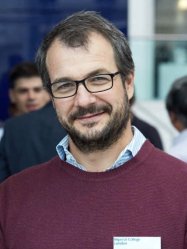BibTex format
@article{Richter:2019:10.1016/j.jaap.2018.11.019,
author = {Richter, F and Rein, G},
doi = {10.1016/j.jaap.2018.11.019},
journal = {Journal of Analytical and Applied Pyrolysis},
pages = {1--9},
title = {Heterogeneous kinetics of timber charring at the microscale},
url = {http://dx.doi.org/10.1016/j.jaap.2018.11.019},
volume = {138},
year = {2019}
}

